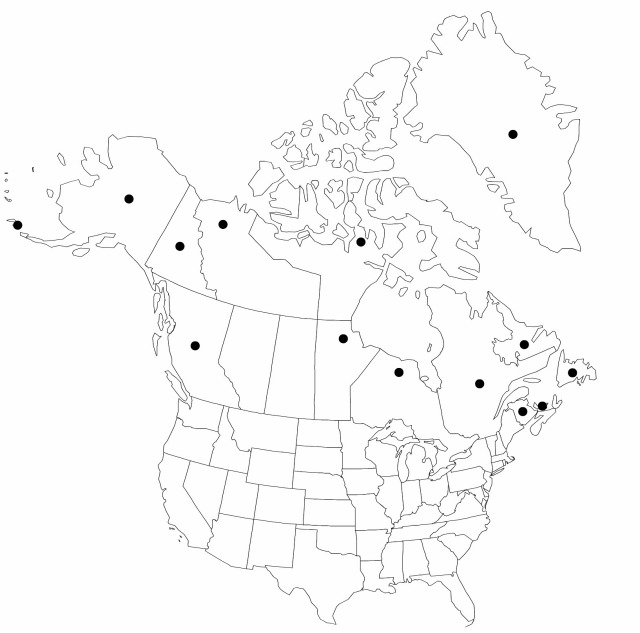Carex glareosa
Kongl. Vetensk. Acad. Nya Handl. 24: 146. 1803.
Plants densely cespitose, in small clumps; rhizomes short. Culms often arching, weak, 10–40 (–60) cm. Leaves: sheaths pale to mid brown abaxially, inner band thin and hyaline, concave at summit; ligules as wide as long, 2–8 mm; blades usually gray-green, flat to channeled, 5–15 cm × 1–2 mm, usually shorter than culms. Inflorescences erect, 1–2 cm × 5–12 mm; proximal bracts usually scalelike, shorter than spikes. Spikes 2–4, closely approximate, individually distinct, proximal lateral spikes pistillate, containing 5–10 (–15) perigynia, oblong-linear; terminal spike gynecandrous, containing 10 (–20) perigynia, clavate. Pistillate scales pale to redbrown with yellowbrown center and white-hyaline margins, oblongovate, subequal to perigynia, apex obtuse. Perigynia ascending, light to pale-brown, often graybrown at maturity, lightly or obscurely several-veined, from broadly elliptic-obovate to lanceolate, 1.5–3.5 × 1.–1.5 mm, widest near middle, subcoriaceous; beak short, entire. Achenes mid brown to redbrown, elliptic, 1.5 × 1–1.25 mm, dull to slightly glossy. 2n = 66.
Distribution

B.C., Man., N.B., N.W.T., Nunavut, Ont., P.E.I., Que., Yukon, Alaska, Eurasia
Discussion
Subspecies 3 (2 in the flora).
Selected References
None.
Key
| 1 | Leaves 1–2 mm wide; pistillate scales 2–3 mm. | Carex glareosa subsp. glareosa |
| 1 | Leaves 1.5–2.5 mm wide; pistillate scales 2.7–3.5 mm. | Carex glareosa subsp. pribylovensis |
"shortened" is not a number."widest" is not a number.